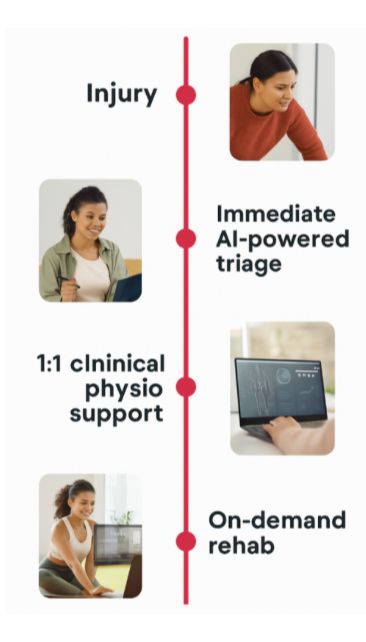Nowadays, employee health benefits aren’t just a “perk”, they’re a strategic necessity.
As medical costs rise and NHS wait times stretch longer than ever, employers are under pressure to offer accessible, cost-effective health support that genuinely meets the needs of their workforce. But what does that look like in 2025?
Recent surveys from industry leaders like WTW, Mercer Marsh, Benenden, and Towergate reveal a clear shift. From MSK-related absence to underused benefits platforms, the latest industry data points not just to challenges, but to opportunities for smarter strategy.
Here’s what the numbers reveal, and what they ask us to consider next.
1. Prevention Is the Priority
“A preventative wellbeing strategy is 3–4x more cost-effective than investing in treatment.” – Mercer Marsh Benefits
It’s a compelling figure, but it also raises questions. If we know prevention is more effective and affordable, why are so many health benefits still reactive? Why wait until MSK pain becomes debilitating before offering support?
True prevention means catching signs early and equipping employees with tools before they deteriorate. That’s not just a clinical opportunity it’s a cultural one that we can truly implement into a person’s lifestyle.
DocHQ Physio integrates AI triage, remote access to clinicians within 24–48 hours, and early risk detection. We see 75%+ adherence rates (2-3x higher than traditional physio) and reduced follow-up appointments. In fact our platform boasts a 90%+ recovery rate seen in our users who fully engage with their tailored plan!
2. Employees Use It When It’s Easy & Expect More From Their Benefits
82% of employees with access to benefits technology feel their employer cares, versus just 56% without it.
The emotional payoff is huge but the operational gap is even bigger. If 80% of staff don’t fully use their benefits, how much value is really being delivered?
It’s not about adding more platforms. It’s about delivering simple, personalised access that speaks the user’s language and nudges them toward action.
3. Cost Pressures Are Driving Smarter, Simpler Choices
93% of business leaders say diagnostics are “essential.”
68% of employees say physio is appealing.
Hybrid workers prefer digital-first fitness options.
Employees aren’t asking for luxury they’re asking for function. Fast answers. Pain relief. Help staying active.
The shift is clear: low-barrier, high-impact support is winning over one-size-fits-all packages. As budgets tighten, how can you provide access to care that feels immediate and meaningful without ballooning your spend?
DocHQ solutions are digitally delivered, scalable, and clinically validated. Our programs cover 80+ MSK conditions with 2100+ rehab exercises no wearables, no travel, no delay.
4. Private Medical Cover Is Rising – But Affordability Isn’t
PMI uptake has grown to 7.6M adults (from 6.7M in 2020) but so have premiums and claim complexity.
The demand is real, but it’s also exclusionary. Many employees (especially shift-based or lower-income roles) are still left behind, despite being at higher risk of MSK issues or long-term absence.
Can your benefits stack serve the whole workforce, not just the ones who already have access?
DocHQ Physio supports teams typically excluded from PMI. With digital-first rehab and remote monitoring, employers have seen a significant drop in MSK-related absence and up to 40% savings on insurance claims.
Where Do We Go From Here?
The research is clear: employees want early, easy, and empathetic care. Employers want results, ROI, and reach.
But between the two lies the real question how do you deliver health benefits that are proactive, not passive?

Ready to modernise your health benefits strategy?
Book a FREE Demo: joe.stewart @dochq.co.uk to learn more about how our platform can support your workforce!



